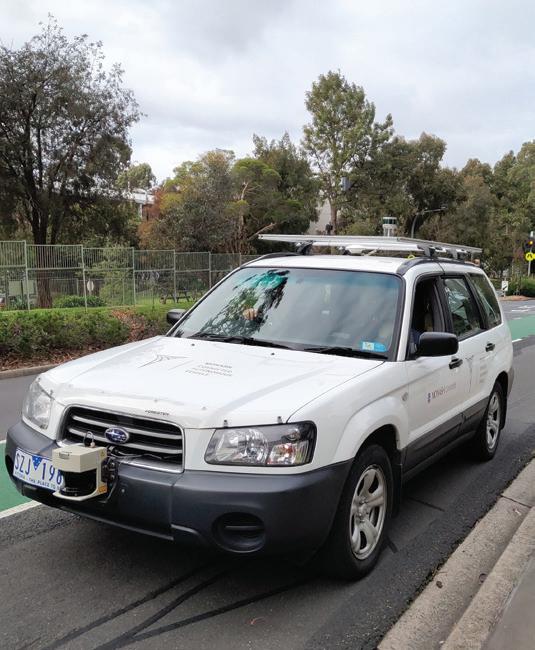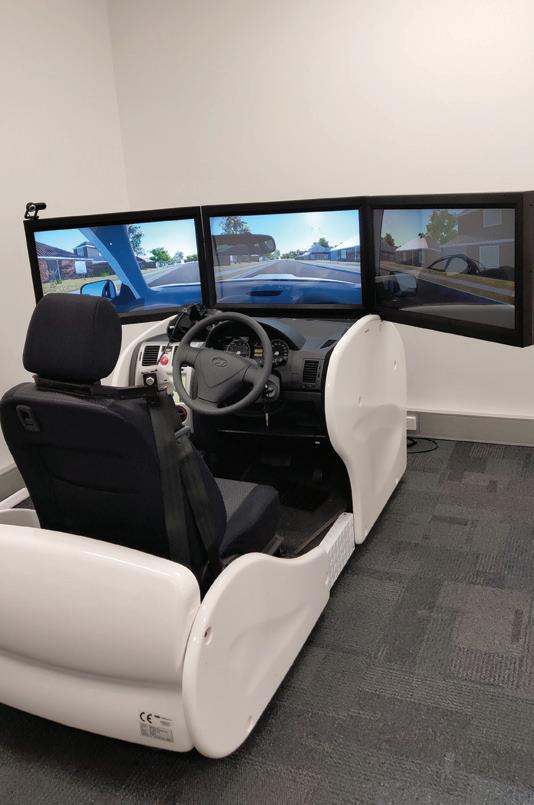
5 minute read
VIRTUAL REALITY AND AUTONOMOUS VEHICLES: A MATCH MADE IN TECH HEAVEN
Monash University has developed VRAV – an augmented on-road driving simulator for autonomous vehicles using virtual reality, offering a potential means to test drivers’ responses to unsafe driving conditions. The project has impressed the industry, winning the 2019 Intelligent Transport Systems (ITS) National Research Award. Here, Infrastructure spoke with Professor Hai L. Vu about the potential applications of the technology and how it fits into the wider scope of driverless vehicle uptake in Australia.
Monash has developed the first on-road autonomous vehicle (AV) simulator in Australia based on the concept known as “Wizard-ofOz” where the driver of a standard vehicle is hidden from the passenger (participant) using a physical partition, providing the participant the illusion of riding in an AV. However, in contrast to the traditional Wizardof-Oz settings, the participant is wearing a VR headset in this simulation, and thus riding an AV without a driver and within a virtual environment which is in sync with the actual physical environment. For this reason, the simulation was named VRAV.
Advertisement
The research is supported by the Monash Infrastructure (MI) seed funding grant and led by Professor Hai L. Vu from the Monash Institute of Transport Studies, in collaboration with the faculties of Engineering, Information Technology, Monash University Accident Research Centre (MUARC) and Monash Art Design & Architecture (MADA).
The project is multi-disciplinary as it utilises expertise in autonomous vehicle (Civil Eng., Professor Hai L. Vu), AR/VR and HMI (IT and software engineering, Dr Barrett Ens), invehicle design (MADA, Associate Professor Selby Coxon), and driving simulation and road safety (MUARC, Dr Steve O’Hern). All the academic members are leading researchers in their own field with many years of research experience relevant to this project. The outcome is a virtual on-road driving simulator
(VRAV) that is augmented in actual on-road driving and capable of replicating a realistic AV driving experience in a real, dynamic environment.
The research includes the testing and validation of the VRAV simulation, and the evaluation of its effectiveness and realism in several scenarios using both a Subaru car and a driver simulator (pictured). The main challenges in the development of this project has been the synchronisation between the virtual and physical words, as well as accurately capturing various biophysiological data and experience of the participants.
UNDERSTANDING AVS IN THE URBAN ENVIRONMENT
Research into AV interactions often relies on experiments using driving simulators or naturalistic driving. The major challenge in the former is to replicate the naturalistic driving conditions with genuine inertial forces and realistic vehicle dynamics. While the latter is expensive and suffers from various legal and ethical obstacles. Although state-of-the-art driving simulators (e.g. with six or eight degrees of freedom) are now equipped with leading-edge technologies such as augmented reality (AR) and virtual reality (VR), the highimmersion driving simulators are very expensive and are as yet to offer the same experience as on-road driving.
Given the rapid development and test deployment of AV, there is a renewed urgency in engaging with high-quality research to better understand the implications of the technology upon our urban environment and the population that will engage with it.
The developed VRAV simulation has the potential to support a variety of AV studies at low cost, enabling virtual simulation of a variety of vehicles, driving conditions and circumstances. This enables both the advancement of knowledge and technology development in relation to AVs, as well as helping with the transition to AV deployment, thus improving public safety once such technology is introduced and adopted.
STEPS NEEDED TO ROLL OUT AUTONOMOUS VEHICLES ON OUR ROADS
In general, there are four main issues to be addressed before the wide adoption of AVs: 1. Safety
In addition to ensuring the safety of passengers, AVs need to take account of other road users (especially pedestrians and cyclists). Extensive testing of AV software, hardware, and communications and networking is indispensable. 2. Cost and mass production
AVs cannot yet be put into mass production. As present safety cannot be guaranteed and high production costs are a major constraint. 3. Laws and regulations
To get AVs on the road on a large scale, clear laws and regulations, as well as determination of accident responsibility, are also indispensable. However, the formulation of laws and regulations still lags behind the development of such technology. 4. Public attitudes and acceptance of AVs
Major companies are investing more than $100 billion to develop and test AVs. However, no matter how advanced a technology may be, if the public are not willing to use or pay for it broadly, the value and benefits of this technology will be greatly reduced. Monash’s VRAV simulation is a simple and cost-effective tool to address and find suitable solutions to some of these challenges.

FUTURE RESEARCH OPPORTUNITIES
The project team doesn't yet have any data on the behavioural psychology of drivers e.g. if drivers learn how automated cars behave could they then "cheat" the system to try and beat traffic, but VRAV could be a perfect tool to collect such data.
This is because in such scenarios, often the safety of the public or the AV participant might be at risk and that is exactly where VRAV simulation can possibly achieve the same outcomes without compromising anyone’s safety.
Monash Institute of Transport Studies, MUARC and Monash University are also actively seeking to partner with government departments, industries and relevant agencies to further develop the tool and contribute to the overall success of the development and deployment of AV technologies. Monash University and the Faculty of Engineering where the Monash Institute of Transport Studies resides, is the leading research faculty in Australia, and Professor Hai L. Vu and his team are one of the leading research groups in this area.
There are many ongoing research activities at Monash (including in the Monash Institute of Transport Studies, MUARC and Monash Infrastructure), and VRAV simulation is just one of many innovations and achievements that Monash researchers and students have achieved for the benefit of the community and society. For more information, please contact Professor Hai L. Vu at hai.vu@monash.edu.










